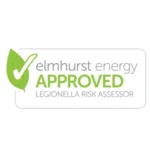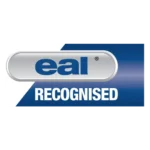At FRA London, we provide trusted, fully insured fire safety services for homes and businesses across London. Our qualified team offers independent, cost-effective solutions tailored to your property, ensuring full compliance and complete peace of mind.
Emergency Lighting Certificate
Starting From £59
FRA London provides Emergency Lighting Certification in London to help businesses comply with safety regulations. Our expert team conducts detailed inspections of emergency lighting systems, ensuring they meet the required standards for visibility and reliability during power outages or emergencies. Upon successful inspection, we issue an Emergency Lighting Certificate, giving you assurance of safety compliance and readiness in unexpected situations, while safeguarding occupants and minimizing risks.
Affordable Pricing
Prices may vary based on property location, congestion, and parking charges

What is an Emergency Lighting Certificate?
If you want proof that your building’s emergency lighting system is up to code, you can get a certificate that says it is. It guarantees that lights will lead people to safety in case of a power outage. The certificate, which attests to the Emergency Lighting (Safety) Regulations 1997 and BS 5266-1, also provides proof of conformity with UK regulations and standards.
- Definition: Emergency Lighting (Safety) Regulations 1997 provide the UK’s legal framework for an Emergency Lighting Certificate. Emergency lighting must adhere to these standards and BS 5266-1, which detail its design, installation, and maintenance. The safety of both commercial and residential structures depends on their adherence to these rules.
- Validity: Emergency lighting certificates have a five-year validity period. However, annual inspections are required to keep the system in working order and up to code. Finding problems or upgrades needed to stay in compliance requires this regular maintenance.
Why is Emergency Lighting Important?
Purpose
Ensures that exit routes are illuminated during power outages, fires, or system failures.
In the event of a power loss, fire, or other catastrophic event, emergency lighting will help people safely navigate to the nearest exits and other evacuation routes. When visibility is low, emergency lights point people toward the exits, calming them down in a potentially dangerous scenario. In times of crisis, it is vital to ensure a safe and orderly evacuation, thereby saving lives.
Safety & Legal Compliance
Mandatory in HMO properties, commercial spaces, and public areas to comply with UK safety regulations.
All public places, businesses, and housing cooperatives in the United Kingdom must provide emergency lighting. Ensuring adherence to BS 5266-1 and the Emergency Lighting (Safety) Regulations 1997 is crucial for upholding safety requirements. The lighting system is guaranteed effective through appropriate installation and regular testing, giving property owners and tenants peace of mind.
Penalties for Non-Compliance
Failure to comply with regulations can lead to fines, legal action, and, in severe cases, criminal prosecution.
Failure to comply with emergency lighting requirements can result in serious consequences, including fines and legal action. Property owners or managers may face criminal charges in severe circumstances, particularly if noncompliance causes harm or death. Regular inspections and maintenance can help prevent these repercussions and assure the safety of all occupants.
Types of Emergency Lighting
Legal Requirements for Emergency Lighting Testing
UK Law & Standards
British Standards BS 5266-1:2016 and BS EN 50172 require regular testing and certification.
Emergency lighting certification and testing in the United Kingdom must adhere to British Standards BS EN 50172 and BS 5266-1:2016. These standards specify what needs to be installed, maintained, and tested for emergency lighting systems to protect building inhabitants. Regular testing is necessary to ensure that the system will function in an emergency and to comply with legal requirements.
Inspection Schedule:
Weekly
Check LED indicators.
The LED indicators on emergency lighting systems are checked weekly to ensure they are operating properly. Without requiring a thorough examination, the LED lights indicate whether the system is functioning properly, offering a rapid and easy approach to finding errors.
Monthly
Test lights using the test switch.
The emergency lights are activated using the test switch to conduct monthly tests. This guarantees that each light is operational and illuminated during a simulated power interruption, thereby facilitating the early identification of potential issues.
6-Monthly
Discharge battery for 1 hour.
The emergency lighting device should have its batteries drained at least an hour every six months. This partial drain tests the battery’s ability to keep the light on for a long time, which helps make sure it will work properly in an emergency.
Annually
Full 3-hour battery discharge test.
Every year, the emergency lighting system must work for three hours without the main power source as part of a full discharge test. This thorough test ensures that the system can keep the lights on for as long as necessary in an emergency and that the battery can hold a charge.

Emergency Lighting Certificate Pricing
The cost of getting an Emergency Lighting Certificate depends on the size and complexity of the property. Prices usually start around £59 to £199 for smaller homes or houses with multiple units.
Costs may be higher for bigger business buildings or places with more complex systems; these costs are usually between £79 and £499. The price generally covers the test, inspection, and presentation of the certificate.
Some repairs or tweaks to the lighting system that need to be made to make it legal may incur extra costs. It is important to work with licensed experts who give you clear prices and detailed quotes based on your property’s needs.
Areas Covered by Emergency Lighting Installation
Interior Areas
Implementing emergency lighting is essential in interior spaces, including hallways, stairwells, corridors, offices, schools, and hospitals. During emergencies, these areas frequently function as critical evacuation routes. Proper lighting guarantees that occupants can safely evacuate the building during a power outage or fire, thereby reducing panic and confusion.
High-Risk Areas
Emergency lighting is necessary in high-risk locations, including plant rooms, kitchens, and storage spaces where hazardous goods are kept. In an emergency, having excellent sight is essential because these locations are more likely to experience accidents and safety dangers. These regions’ emergency lights direct people to safer areas and help stop more dangers.
Outdoor Areas
Outdoor spaces, including car parks, petrol stations, and areas without consistent artificial lighting, should also have emergency lighting. These areas can become dangerous during power outages or low-visibility conditions. Emergency lighting illuminates outdoor paths and ensures safe movement for pedestrians and vehicles alike.
How Does Emergency Light Testing Work?

Why is regular testing crucial?
Ensure Functionality
Like all electricity systems, emergency lights break down over time. Regular testing helps find broken bulbs, dead batteries, or other parts that might not work in an actual situation. If you catch these problems early, you can ensure the lighting system works well when it’s needed the most.
Reduce Liability
Testing emergency lights regularly lowers the chance of getting hurt or having trouble getting out during an emergency. It helps keep your building safe for those who live or work there, lowering your risk of being sued in case of an accident or not following safety rules.
Maintain Compliance
According to UK laws, emergency lighting systems must be tested and maintained regularly. Conducting these checks helps to demonstrate compliance with safety requirements, safeguarding property owners and managers from any penalties or legal actions. Keeping a complete diary of testing and inspections also gives valuable evidence in the event of audits or mishaps.
Geographical Breakdown of London’s Districts
How Often Should You Test Emergency Lighting?
Weekly
The LED indicators on the emergency lighting system visually are part of a weekly check-up. These LEDs indicate whether the emergency lighting units are powered on and operating as intended. This quick check guarantees that any flaws or problems are found quickly, which helps to keep the system operating at peak readiness.
Monthly
A quick discharge test is carried out every month to guarantee the emergency lights turn on as they should. This test replicates a power outage using a test switch. The lights should turn on immediately to show they can operate in an emergency. This test also finds any early system defects.
6-Monthly
Emergency lighting system batteries are tested every six months with a one-hour discharge test. This test simulates a true emergency when power may be off for more than a few minutes by keeping the lights on. Battery capacity must be checked.
Annually
Every year, there has to be a full discharge test, during which the emergency lighting system works for three hours straight. This test ensures that the system can keep the lights on for as long as the law says it has to in case the power goes out for a long time. It is the most thorough test, ensuring compliance and functionality last long.










